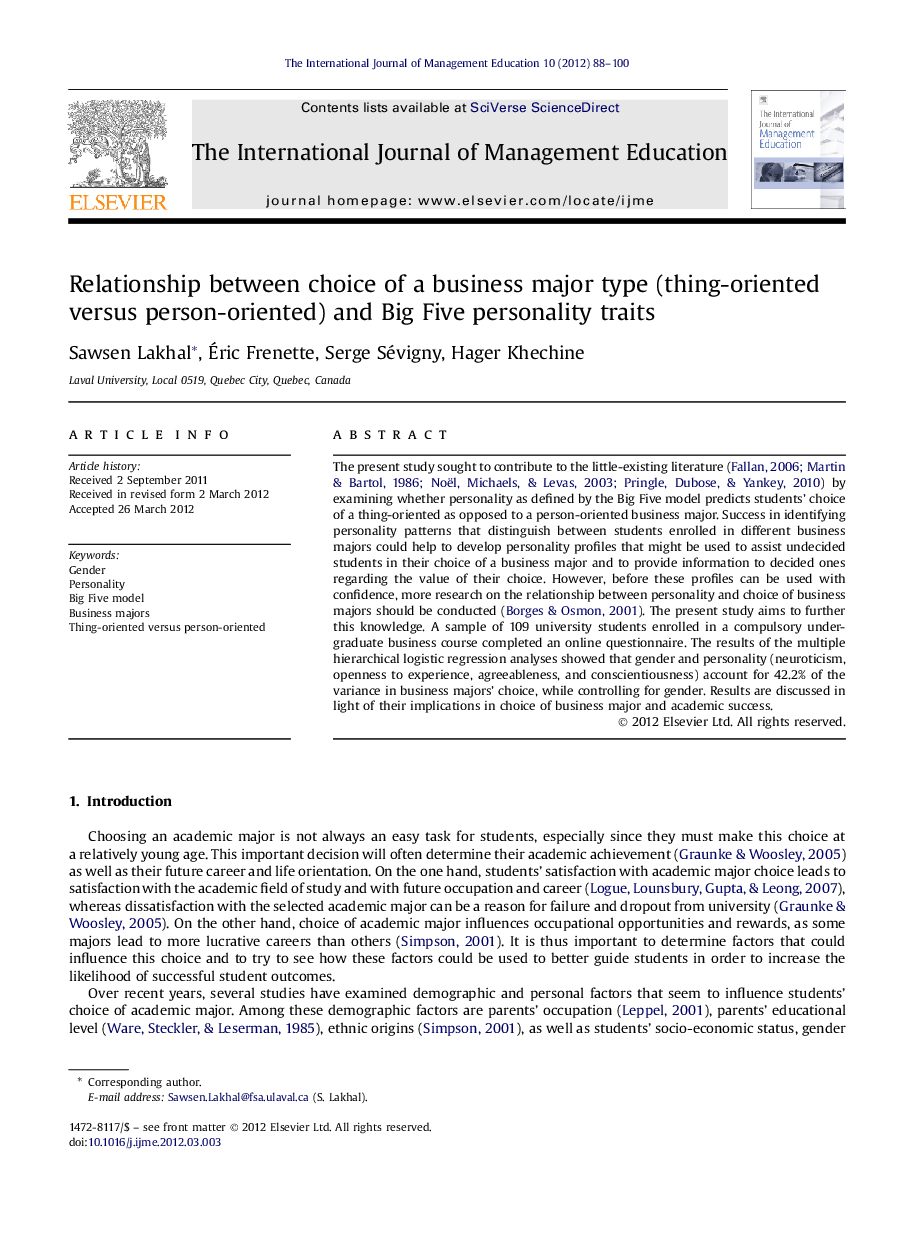| کد مقاله | کد نشریه | سال انتشار | مقاله انگلیسی | نسخه تمام متن |
|---|---|---|---|---|
| 357463 | 1435532 | 2012 | 13 صفحه PDF | دانلود رایگان |

The present study sought to contribute to the little-existing literature (Fallan, 2006, Martin and Bartol, 1986, Noël et al., 2003 and Pringle et al., 2010) by examining whether personality as defined by the Big Five model predicts students’ choice of a thing-oriented as opposed to a person-oriented business major. Success in identifying personality patterns that distinguish between students enrolled in different business majors could help to develop personality profiles that might be used to assist undecided students in their choice of a business major and to provide information to decided ones regarding the value of their choice. However, before these profiles can be used with confidence, more research on the relationship between personality and choice of business majors should be conducted (Borges & Osmon, 2001). The present study aims to further this knowledge. A sample of 109 university students enrolled in a compulsory undergraduate business course completed an online questionnaire. The results of the multiple hierarchical logistic regression analyses showed that gender and personality (neuroticism, openness to experience, agreeableness, and conscientiousness) account for 42.2% of the variance in business majors’ choice, while controlling for gender. Results are discussed in light of their implications in choice of business major and academic success.
Journal: The International Journal of Management Education - Volume 10, Issue 2, July 2012, Pages 88–100